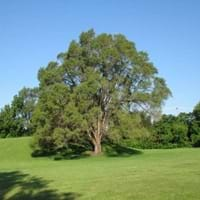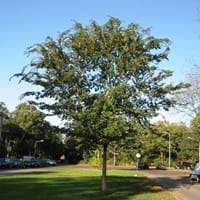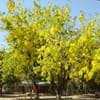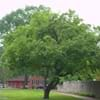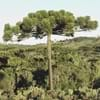Life Span
Perennial
Perennial
Types
Not Available
Ulmus chumlia, Ulmus glabra, Ulmus elongata
Habitat
Woodland Garden Canopy
River side
USDA Hardiness Zone
2-9
5-9
Sunset Zone
A1, A2, A3, 1a, 1b, 2a, 2b, 3a, 3b, 4, 5, 6, 7, 8, 9, 10, 11, 14, 15, 16, 17, 18, 19, 20, 21
3a, 3b, 4, 5, 6, 7, 8, 9, 10, 11, 12, 13, 14, 15, 16, 17, 18, 19, 20, 21, 22, 23, 24
Habit
Upright/Erect
Upright/Erect
Minimum Height
Not Available
Minimum Width
Not Available
Flower Color
Not Available
Red
Flower Color Modifier
Bicolor
Bicolor
Fruit Color
Green, Tan
Tan, Brown
Leaf Color in Spring
Dark Green
Green
Leaf Color in Summer
Dark Green
Dark Green
Leaf Color in Fall
Dark Green
Yellow, Red, Green
Leaf Color in Winter
Not Available
Not Available
Leaf Shape
Elliptic
Toothed
Plant Season
Summer
Spring, Summer, Fall, Winter
Sunlight
Full Sun
Full Sun, Partial Sun
Growth Rate
Very Fast
Not Available
Type of Soil
Clay, Loam, Sand
Loam, Sand
The pH of Soil
Acidic, Neutral, Alkaline
Acidic, Neutral, Alkaline
Soil Drainage
Average
Well drained
Tolerances
Pollution, Drought
Drought
Where to Plant?
Ground
Ground
How to Plant?
Seedlings
Seedlings, Stem Planting, Transplanting
Plant Maintenance
Medium
Medium
Watering Requirements
Do Not over Water, Needs watering once a week
Average Water Needs, Requires watering in the growing season, Water when top layer of soil becomes dry
In Summer
Lots of watering
Lots of watering
In Spring
Moderate
Moderate
In Winter
Average Water
Average Water
Soil pH
Acidic, Neutral, Alkaline
Acidic, Neutral, Alkaline
Soil Type
Clay, Loam, Sand
Loam, Sand
Soil Drainage Capacity
Average
Well drained
Sun Exposure
Full Sun
Full Sun, Partial Sun
Pruning
Remove diseased branches by the tool's blades dipped into the alcohol solution
Prune if you want to improve plant shape, Remove damaged leaves, Remove dead leaves, Remove shoots
Fertilizers
20-5-10 fertilizer
organic fertlizers
Pests and Diseases
Aphids, Leaf spot, Powdery mildew
Mealybugs, Red blotch, Scale
Plant Tolerance
Drought
Drought
Flowers
Insignificant
Insignificant
Flower Petal Number
Not Available
Single
Foliage Texture
Medium
Fine
Foliage Sheen
Matte
Glossy
Attracts
Insects, Not Available
Not Available
Allergy
Mild Allergen
allergic reaction
Aesthetic Uses
Bonsai
Bonsai, Landscape Designing
Beauty Benefits
Not Available
Not Available
Environmental Uses
Air purification
Air purification, Food for birds, Food for insects, No fertilizer, pesticides, or herbicides needed, Prevent Soil Erosion
Medicinal Uses
Antibilious, Antidote, Demulcent, Diuretic, Febrifuge, Poultice
Antidote, Demulcent, Diuretic
Part of Plant Used
Fruits, Inner Bark, Leaves
Fruits, Inner Bark, Leaves
Other Uses
Inner bark can be dried and made into noodles, Sauces, Sometimes used for making wine, Used as a potherb, Wood used for boat making
Used as firewood, Used for its medicinal properties, Used in construction, Used in Furniture, Wood is used for making furniture, Wood is used for ship building, Wood is used in construction
Used As Indoor Plant
No
Yes
Used As Outdoor Plant
Yes
Yes
Garden Design
Shade Trees
Container, Feature Plant, Mixed Border, Shade Trees, Street Trees, Topiary / Bonsai / Espalier
Botanical Name
ULMUS pumila
ULMUS parvifolia 'Drake'
Common Name
Siberian Elm
Chinese Elm, Drake Elm
In Hindi
Siberian Elm
चीनी एल्म
In German
Siberian Elm
Chinese Elm
In French
Siberian Elm
Elm chinoise
In Spanish
Siberiano Elm
olmo chino
In Greek
Σιβηρίας Elm
Κινέζοι Elm
In Portuguese
Siberian Elm
Elm chinês
In Polish
Siberian Elm
Chiński Elm
In Latin
Siberian Elm
Chinese Elm
Phylum
Magnoliophyta
Magnoliophyta
Class
Magnoliopsida
Magnoliopsida
Clade
Angiosperms, Eudicots, Rosids
Angiosperms, Asterids, Eudicots
Tribe
Not Available
Ulmeae
Subfamily
Not Available
Not Available
Number of Species
Not Available
Not Available
Season and Care of Siberian Elm and Chinese Elm
Season and care of Siberian Elm and Chinese Elm is important to know. While considering everything about Siberian Elm and Chinese Elm Care, growing season is an essential factor. Siberian Elm season is Summer and Chinese Elm season is Summer. The type of soil for Siberian Elm is Clay, Loam, Sand and for Chinese Elm is Loam, Sand while the PH of soil for Siberian Elm is Acidic, Neutral, Alkaline and for Chinese Elm is Acidic, Neutral, Alkaline.
Siberian Elm and Chinese Elm Physical Information
Siberian Elm and Chinese Elm physical information is very important for comparison. Siberian Elm height is Not Available and width Not Available whereas Chinese Elm height is 1,520.00 cm and width 1,220.00 cm. The color specification of Siberian Elm and Chinese Elm are as follows:
Siberian Elm flower color: Not Available
Siberian Elm leaf color: Dark Green
Chinese Elm flower color: Red
- Chinese Elm leaf color: Green
Care of Siberian Elm and Chinese Elm
Care of Siberian Elm and Chinese Elm include pruning, fertilizers, watering etc. Siberian Elm pruning is done Remove diseased branches by the tool's blades dipped into the alcohol solution and Chinese Elm pruning is done Prune if you want to improve plant shape, Remove damaged leaves, Remove dead leaves and Remove shoots. In summer Siberian Elm needs Lots of watering and in winter, it needs Average Water. Whereas, in summer Chinese Elm needs Lots of watering and in winter, it needs Average Water.
